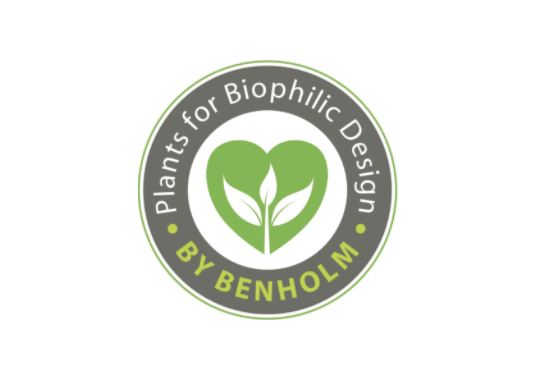
As Benholm Group prepare to join forces with Sustainability Lead & PhD Researcher, Joyce Chan- Schoof on new research study the ‘value of biophilic design’, we speak with her about her passion for biophilic design and how she hopes to prove the social and economic benefits of biophilic design in the workplace.
Can you tell us about your professional background and how your interest and passion for discovering the benefits of biophilic design began?
I have been working in the architecture and design industry for about 20 years. Currently, I am the Sustainability Leader of the UK Parliamentary Estate, developing a (Social) Value framework for the built environment. My interest in biophilia began when I led a research team in commercial architectural practices; one of which was PLP Architecture – they then became my collaborators. I know the team there very well, and alongside my PhD supervisors (Dr. Vicky Lofthouse and Dr. Robert Schmidt-III from Loughborough University), and my mentor Professor Derek Clement-Croome, we initiated this collaboration – it explores the value of biophilic design and well-being. This has all come full circle.
“When we talk about biophilic design, people often just think about having indoor greenery, but actually it’s a much broader concept – it’s about creating a connection with nature” – Joyce Chan-Schoof
Tell us about your research study the ‘Value of Biophilic Design’. Why are you undertaking it and what are your main objectives?
As an expert in sustainable design, I was keen to include Benholm Group in the study. I have been really enjoying Benholm Group’s input – they’re not just an indoor plant supplier, they have become part of the design team.
Benholm Group are super proactive and I like the way they initiate design solutions and help out with graphics; visualising the space is an important step to understand how biophilic experience can be produced. They’re working really closely with our design team from PLP Architecture on getting the right type of experience, they are open-minded with our suggestions, and they understand the dynamic of space as a formal workplace.
Benholm wants to highlight that the planting needs to be integrated into the whole experience (not a flower show), and some of those decisions are very fundamental. If you miss the opportunity in the early stage of the design, it’s very difficult to create an immersive experience in the later stage of the development.
How are Benholm Group supporting you on the ‘Value of Biophilic Design’ research study?
As experts in designing with plants for biophilic benefit with sustainable design, I was keen to include Benholm Group in the study. I have been really enjoying Benholm Group’s input – they’re not just an indoor plant supplier, they have become part of the design team.
Benholm Group are super proactive and I like the way they initiate design solutions and help out with graphics; visualising the space is a really important step to understand how biophilic experience can be produced. They’re working really closely with our design team from PLP Architecture on getting the right type of experience, they are open-minded with our suggestions, and they understand the dynamic of space as a formal workplace.
Benholm wants to highlight that the planting needs to be integrated into the whole experience (not a flower show), and some of those decisions are very fundamental. If you miss the opportunity in the early stage of the space’s design, it’s very difficult to create an immersive experience in the later stage of the design.
“As experts in designing with plants for biophilic benefit, I was keen to include Benholm Group in the study. I have been really enjoying Benholm Group’s input – they’re not just a supplier, they have become part of the design team” – Joyce Chan-Schoof
What ‘value’ are you hoping to get out of this study? What does the word value mean?
For this research study, it’s the value of good design and the value of sustainability. In terms of value, we are trying to quantify quality which is something that hasn’t been done before in such a manner – smart technologies come into play. We want it to be a robust process and, a the same time, it should be easy to understand.
For example, we are trying to translate the value of well-being by design – if you have a view from your office to the outside – a view nature – that could be the equivalent of say, £500 per person per year. If we can introduce a creditable valuation process in the background to be able to link with financial proxies, we may be able to monetise the quality of good spaces in a way that encourages clients or project teams to start thinking about biophilic design from the very start of their projects. In the real estate industry, we are very good at putting things in numbers, but because design and well-being of people is a very qualitative area, sometimes biophilia is missed out.
We are hoping to make a more direct link to the upfront, budget planning stage and in the design brief. It will win half of the battle for designers because you don’t have to negotiate this after the design is done – it should be an integral part of the process. I’m not saying that this is necessarily the only way to do that, but it helps to create a plan that finance teams can comprehend quite easily. We often cut the budget we need to allow for good design through value-engineering exercises, which does not give us any value in the end if we do not understand the value of well-being.
How important do you think planting is as part of biophilic design?
I think it depends on how you use the plants. If you just put a potted plant in front of your desk, it may not make a difference, but if you plan it in a way where plants are integrated with the space and specific to the group of people, then the multi-sensory design may benefit them.
For example, it may be good for the retail industry to have a more ‘out-there’ design with plants and flowers that are quite celebratory in the space, whereas for a workplace you may want to keep a very clean, calm and maintainable environment. You may also create an immersive experience for a destinated social space, and that’s why I think it’s really important to have this conversation upfront because design strategy should be very specific to the type of well-being effect.
If people say that plants don’t help to improve well-being, it’s not because they’re not good or impactful, it is because they aren’t being designed for the specific context and culture.
How do you plan to share the results of the study and what do you think will happen afterwards?
The expected outcome will be from a mixture of sources. We are using some smart technologies to creating a ‘value spatial map’. We will be assessing physiological changes, and more conventional Indoor Environmental Quality data to capture the indoor temperature and humidity. Then we will be questioning the participants.
The participants’ experience, i.e., how they feel about the space or what behaviour has changed in different biophilic settings and the other way round. It is quite a complex project, because it’s not easy to triangulate various types of data to a single monetised value. I hope the study will be useful for both designers and commercial decision-makers.
Learn more about Biophilic Design: www.benholm.com/biophilic-design
Connect with Joyce Chan-Schoof: www.linkedin.com/joyce-chan-schoof
Connect with PLP Architecture: plparchitecture.com














